“The new Terminal 2 isn’t just one building but a complex machine comprised of 118,000 individual assets that need to work in harmony to deliver a good experience”—John Holland-Kaye, CEO, Heathrow Airport
Amsterdam’s Schiphol and London Heathrow airports have installed self-service bio-metric passport gates that use facial recognition technology. Japan’s All Nippon Airways, on the other hand, makes smart tablets available to travellers so that they can check in quickly, navigate the airport, and receive real-time messages about their flights. Information technology is quickly transforming aviation and touching every aspect of air travel from the point of departure to arrival at destination. The airports of tomorrow are going to be a very new and exciting experience and are expected to become one of the more pleasing parts of the journey, rather than one of the most boring.
The travel experience will begin the moment you make your reservation. For example, on arrival at the airport, you can choose how to check in: auto check-in when entering the terminal, use a self-service electronic kiosk or stand at a conventional desk-based check-in. To check-in bags, self-tagging stations will allow you to efficiently manage your luggage. If you have no bags, you go straight for security check where identity sensors will confirm your identity.
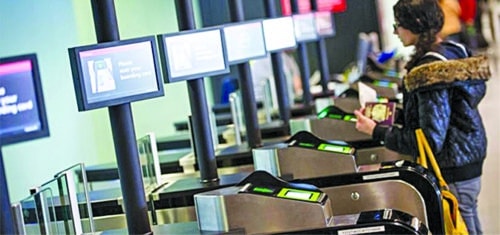
Your boarding pass, identification and biometrics will allow you total control of passage through the airport, all the way to aircraft boarding. The key to this automated travel vision is biometrics, in the form of iris scan, fingerprint, facial recognition, etc. Digital technology will eliminate holdups in check-in, bag drop, security and boarding by doing away with the most time-consuming element—human interaction. Biometrics in every phase of the process will help airports to remain vigilant with passengers. For example, on inbound international flights, the passenger verification process will complete even before the aircraft lands.
Soon your face will be your passport. Australia has developed the technology to introduce fingerprints, iris or facial recognition at major air and seaports to replace passports for passenger identification by 2020. This will help to improve security by making it easier to detect threats. The system will also avoid paperwork or manual processing for majority of the passengers and make it easier and quicker for people going in and out of airports.
Integration and wireless innovations
Fully integrated, end-to-end solutions using information and wireless technology will eliminate the use of large amounts of cables, leading to lower costs, greater efficiency, greater mobility and geo-location, and a greatly enhanced passenger experience. For example, using wireless beacon technology and a simple smart phone app, individual or group messages can be sent to inform only the targeted passengers of relevant gate changes, or ground handlers can be apprised of a weather forecast change. These systems will identify the closest ground handler to secure vehicles nearby.
A system of perimeter cameras controlled wirelessly will create geo-fencing to keep specific assets in particular areas, warn ramp drivers about their speed, or immediately direct fuel trucks or other services to the relevant aircraft. It will be possible to integrate information technology in a modular manner, choosing a la carte from an extensive menu based on need and budget. Innovations in secure and reliable cloud technology will help substitute local infrastructure with shared service, making the technology more efficient and cost-effective, even for the smallest airports.
Enhanced passenger experience
Imagine boarding a flight after scanning your boarding pass, tagging and checking your bags and locating the nearest spot for an airport manicure by tapping a screen. Passengers will be able to weigh their own luggage without the assistance of an agent, and drop the bags off at luggage acceptance points. Do-it-yourself boarding will allow passengers to speed up the process of getting to their seats. Self-service kiosks will be available for passengers to resolve issues such as booking new flights if previous flight was cancelled.
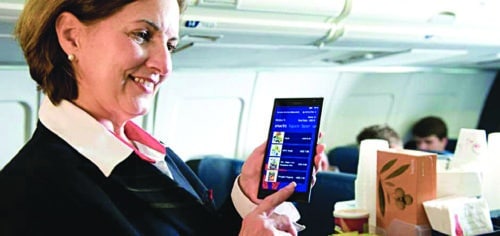
Flight attendants will have a new, advanced type of mobile device that provides every bit of information right from the name and age of passengers who might need a little extra attention to notes about fliers’ all previous flying experiences. They will carry phablets for communication with passengers, who will be able to text their requirement from their seat. The devices hand-held by the crew could be fed with highly specific information, such as a flier’s request not to wake him up for a meal. The devices could even be used to quicken maintenance—for example, by taking a picture of a damaged tray table and transmitting it to the mechanic at the other end to seek help in fixing right away.
Smart flight information display system
A smart flight information display system (FIDS) also includes the baggage information display system and advertising system. A key component of the airport’s integrated operational systems, smart FIDS are directly connected to the airport’s operational database and resource management. With the airport environments becoming increasingly intense, the flight and operational information needs to be disseminated quickly and cost-effectively. For this purpose, the FIDS include a control centre, distribution servers, input terminals and display technology. The system control centre is responsible for storing, processing and transferring all flight and general information. The processed information is sent by FIDS via LAN to the connected distribution servers in real time so that the users are supplied with high-quality consistent information. This information is processed and transferred, by the distribution server, to the corresponding display devices.
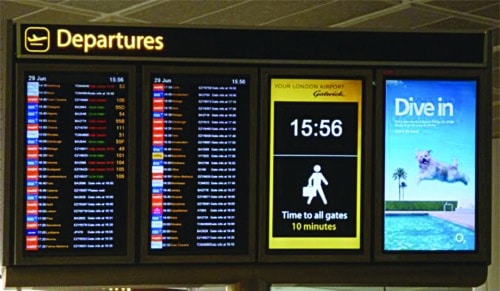
The FIDS system communicates and supports any type of display device such as CRT monitors, LCD flat panels, plasma displays, split flap boards and LED signage. It is possible to use new communication technologies to distribute and display the information in any required format, such as text, audio, video, images, animations and movies. The system is cost-effective and provides flexible state-of-the-art multimedia display. It is easily configurable and automatically collects the information, organises it according to programmed graphical and paging formats, and disseminates to keep passengers, operations staff, airport management, ground handling personnel or airlines crew informed. Information on the flight’s status, boarding time, gate or baggage belt assignments, boarding gates, baggage sorting carousels, arrival and departure areas, etc is available in real time. It can play a key role in airport safety, for example, by providing immediate information for airport evacuation in case of an emergency or security alert. The fault tolerance option is configured with automated load-sharing and redundancy on multiple servers to provide built-in back-up and reliability.
Each display device is continuously monitored and its proper functioning verified in real time from authorised workstations. The system can also provide visual paging for the hearing impaired and display weather information, promotional and advertising information.
Digital displays
Digital displays provide flight information, paid advertising, airport marketing, and regulatory and emergency information consistently across multiple locations, which is a laborious task with static signage. Unlike static signage, these require little cabling. These can be controlled and updated instantly and remotely. Low life-cycle cost results in higher revenues.
Digital displays enable travellers to easily find information about shopping, dining and other airport amenities. ‘Map it’ facility provides way finding through a digital map, with graphically detailed directions and estimated walking time to the location chosen. This information can also be easily sent to a smart phone using QR code.

Mobile phones
Web pages can be tailored to mobile devices, utilising apps designed specifically for the airport to provide all the information that can be found on traditional in-terminal signage. For example, the app ‘Fly Smart’ has detailed terminal maps that can locate your position in an airport, find a nearby restaurant, track a flight and provide ground transportation information. Additional revenue for the airport can be generated from advertising integrated with the app. The integration includes QR codes on existing static or digital advertising.
Interactive kiosks
Kiosks provide a complete integration of all the elements found in the other signage in the terminal and allow users to choose information to be displayed at any given time. Checkpoint information, weather, advertising elements, and terminal marketing information are made available in an interactive format. Each user can select from several different languages to find the needed information. The interactive kiosks are static and therefore the information can be presented in a larger format, accessed directly by the users. These push the information to the traveller via print or their mobile device and can also provide a direct connection to social media.

Air traffic control technology
To prevent collisions, air traffic control (ATC) enforces traffic separation rules to ensure each aircraft maintains a minimum amount of separation based on the type of flight and the class of airspace. It is also responsible for the standard separation and efficient movement of aircrafts and vehicles on the taxiways and runways of the airport. The responsibility areas of ATC span across airport control, ground control, air control, clearance and flight data, and approach and terminal control.
Controllers use surveillance radar for airborne traffic approaching and departing to display a map of the area, positions of various aircrafts, and data tags that include aircraft identification, speed, altitude and other information. In adverse weather conditions, these use surface movement radar and surface movement guidance and control systems to control traffic on the taxiways and runways. Displays may be optical live video and/or synthetic images. Remote and virtual towers use controllers located somewhere else than at the local airport tower to provide air traffic control services based on the latest IT and artificial intelligence technology.
Ground control covers areas such as taxiways, inactive runways, holding areas, and transitional aprons or intersections. It is vital for smooth overall safety and efficiency of the airport operations, and sequencing of departure aircrafts. Any aircraft, vehicle, or person walking or working in these areas is required to have ‘clearance’ from ground control. This is normally done via VHF/UHF radio or using smart phones. Busier airports also use surface movement radar, to display aircrafts and vehicles on the ground, as an additional tool to control ground traffic, especially at night or in poor visibility.
The capabilities of these systems are being enhanced using digital technology. While conventional systems display a map of the airport and the target, latest systems provide high-quality mapping, radar targets, data blocks, safety alerts, and improved interface with other systems.
Air control, also known as ‘tower control,’ is responsible for the active runway surfaces. It clears aircrafts for takeoff or landing, and ensures that the prescribed runway separation exists at all the time. Under unsafe conditions, a landing aircraft is instructed to ‘go-around’ and is re-sequenced into the landing pattern. A very efficient and effective communication is maintained between air control and ground control to ensure that the ground control is aware of any operation impacting the taxiways and to create ‘gaps’ in the arrival traffic to allow taxiing traffic to cross runways and enable departing aircrafts to take off. In advanced systems, applications such as crew resource management and team resource management make this communication process efficient, reliable and clear.
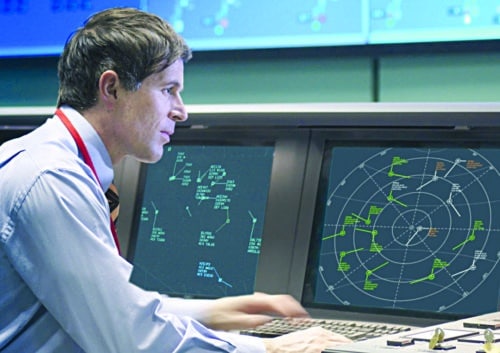
Clearance and flight data
Clearance delivery system ensures that aircrafts have correct aerodrome information, such as weather and airport conditions, route after departure and time restrictions related to the flight. Busier airports use ground movement planner or traffic management coordinator to prevent taxiway and apron gridlock. Flight data, combined with clearance delivery, ensures that both controllers and pilots have the most current information on weather changes, outages, airport ground delays/ground stops, runway closures, etc. State-of-the-art systems use a recorded continuous loop on a specific frequency, called the automatic terminal information service.
Radar used at the control centres
Control centres use a long-range radar that, at higher altitudes, can see aircrafts within 370km (200 nautical miles) of the radar antenna. These also use TRACON radar to control the areas not covered by the long-range radar.
Since no radar systems are available for traffic control over the oceanic areas, oceanic controllers provide ATC information using procedural control. These procedures use aircraft position reports, time, altitude, distance and speed to ensure separation. The information is recorded on flight progress strips and in specially developed computer systems. Newer systems implement automatic dependent surveillance–broadcast (ADS-B) as part of their surveillance capability.
ADS-B reverses the radar concept: Instead of the radar ‘finding’ a target by interrogating the transponder, the ADS-equipped aircraft sends a position report as determined by the navigation equipment on board the aircraft. Normally, the aircraft reports a position, automatically or initiated by the pilot, at a predetermined time interval. Controllers may also request more frequent reports to establish aircraft position for specific reasons. ADS can be used where it is not possible to locate a radar system, such as over water.
Computerised radar displays are now being designed to accept ADS inputs as part of the display. Precision approach radars are used by military controllers, to assist the pilot in final phases of landing in places where instrument landing system and other sophisticated airborne equipment are unavailable to assist the pilots in marginal or near-zero visibility conditions. A radar archive system (RAS) is used to keep an electronic record of all the radar information for a few weeks, which can be useful for search and rescue. It is also useful for technicians maintaining the radar systems.
Space-based ATC
NASA’s new space-based, higher-frequency, higher-bandwidth radio system can track aircrafts in real time across the globe by sending large quantities of data back and forth pretty fast. The communication system can be reprogrammed from a distance to ensure that flights are quickly located in case of mishaps. The radios are used to create a space-based global air traffic control system.
Under this project, a constellation of 66 satellites equipped with the new radios will be launched into the orbit. The radios are programmed to receive signals from ADS-B airplane transceivers, which will automatically send out a flight’s number, location, heading and other details. This will make it possible to keep track of all the aircrafts in the world within seconds. With real-time global tracking, planes will be able to fly with less space between them and therefore take more direct routes.
Coming up: airport cities
In a few years from now, biometric face recognition software, machine-readable passports and high-speed laser molecular scanners will enable fliers to clear security and customs checking at the airport within seconds. Once inside the aircraft, they can look forward to being treated with massage seats where they are served various drinks and vitamins and provided a perfumed environment of their choice. Sound showers will help them relax and get a perfect night’s sleep. The entire body of the plane will be made up of panoramic windows that can be made fully transparent at a click, thus providing travellers with astounding 360-degree views of the world around them.
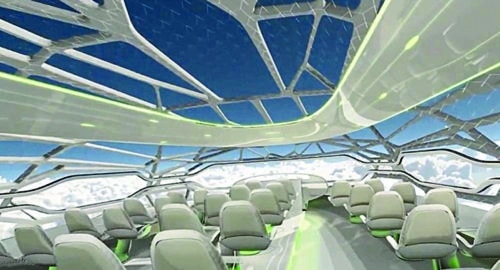
Already we have some airports that are like a mini city, thus doing away with the need to step out into the city if you have a brief layover. Passenger processing technologies—such as those already in the marketplace—hold great promise to leverage greater system integration, mobile technology and smart devices for greater efficiency, lower operating costs and a transformative passenger experience.







Keeping all this data on customers so they could move around the airport freely to get to their gate, and board their plane is very dangerous. Put as much effort into securing the data from internet hackers. Nobody will feel safe when they consider all the big corporations that were hacked. Everybody from HBO, to Equifax, nothing is safe if it involves the internet. Consider a closed internet system that ties all airports together with hardware encrypted communication between them and the data center. It would take a long time to get it up and running, but in the end it would secure our airports from internet hackers up to a whole new level. Any communication to the outside would have to go through a system that would involve a gateway that would use optical character recognition to take a picture and turn it back into words, this way nothing could pass through the system that was not intended.
Thanks so much for some project but we are need more project based in IT involved in AI and IOT
Thank you for your suggestion. We will definitely add new AI and IoT project in coming months.